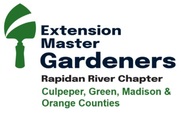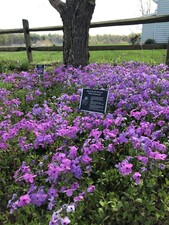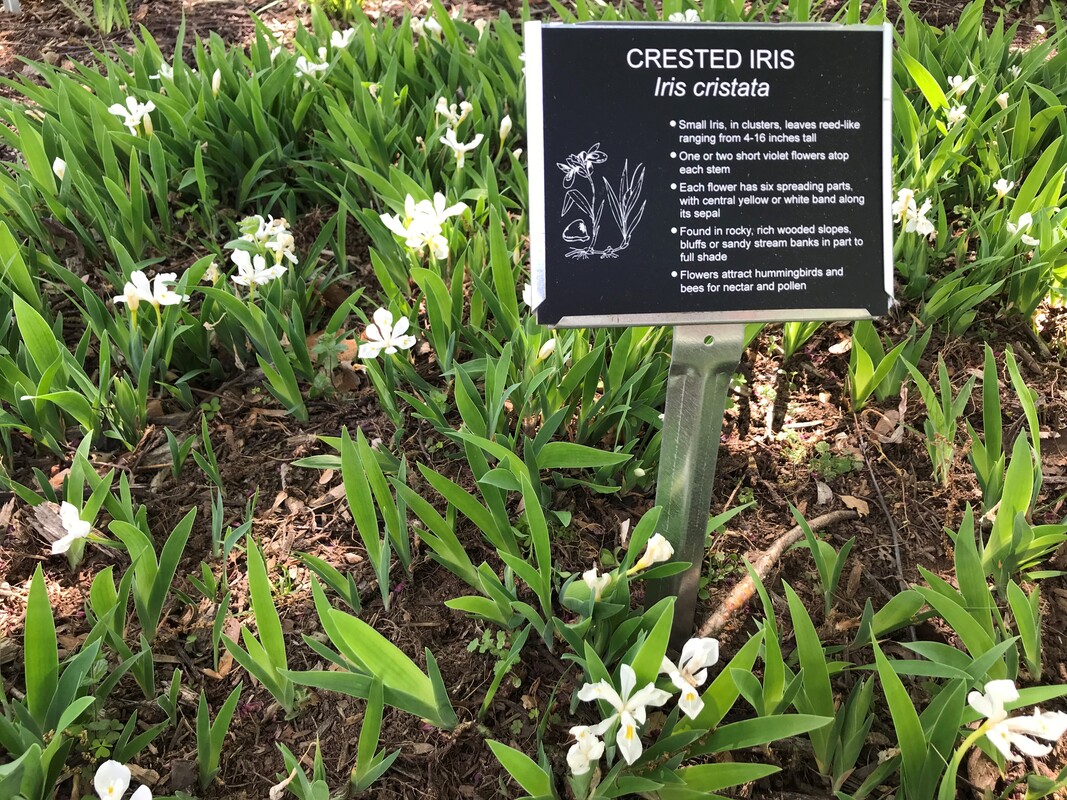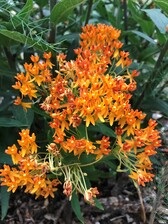Native Plant Demonstration Garden
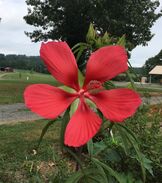
Native Plant Demonstration Garden History
In 2005, members of the Rapidan River Master Gardeners got permission from the county to prepare a site for the Native Plant Garden. There were donations of plants from member’s gardens and purchases made from Blandy Annual Plant Sale.
Since then, the garden has been tended and mulched by the Master Gardeners and updated sign identification added in 2022.
Our demonstration garden shows how to use native plants in your landscaping design and build ecologically friendly plantings and water conservation ideas as part of gardens of all sizes.
Native Plant Definition
Native plants have formed symbiotic relationships with native wildlife over thousands of years, and therefore offer the most sustainable habitat. A plant is considered native if it has occurred naturally in a particular region, ecosystem, or habitat without human introduction.
Native plants help the environment the most when planted in places that match their growing requirements. They will thrive in the soils, moisture and weather of your region. That means less supplemental watering, which can be wasteful, and pest problems that require toxic chemicals. Native plants also assist in managing rain water runoff and maintain healthy soil as their root systems are deep and keep soil from being compacted.
Piedmont Environmental Region
Piedmont Native Plants a guide for Landscapes and Gardens describes Piedmont native plants as follows:
“Piedmont native plants are defined as plants that evolved in this region before influences of European settlements at Jamestown began to shape and change the landscape. There is strong evidence that the Monacan Nation and other indigenous peoples living on the lands that are now Virginia have contributed to the alteration of the landscape by cultivating and relocating species over the last 14,000 years. Historically, the eastern part of the United States was covered with an expansive mixed hardwood forest with scattered open areas.”
Other resources: www.vnps.org
In 2005, members of the Rapidan River Master Gardeners got permission from the county to prepare a site for the Native Plant Garden. There were donations of plants from member’s gardens and purchases made from Blandy Annual Plant Sale.
Since then, the garden has been tended and mulched by the Master Gardeners and updated sign identification added in 2022.
Our demonstration garden shows how to use native plants in your landscaping design and build ecologically friendly plantings and water conservation ideas as part of gardens of all sizes.
Native Plant Definition
Native plants have formed symbiotic relationships with native wildlife over thousands of years, and therefore offer the most sustainable habitat. A plant is considered native if it has occurred naturally in a particular region, ecosystem, or habitat without human introduction.
Native plants help the environment the most when planted in places that match their growing requirements. They will thrive in the soils, moisture and weather of your region. That means less supplemental watering, which can be wasteful, and pest problems that require toxic chemicals. Native plants also assist in managing rain water runoff and maintain healthy soil as their root systems are deep and keep soil from being compacted.
Piedmont Environmental Region
Piedmont Native Plants a guide for Landscapes and Gardens describes Piedmont native plants as follows:
“Piedmont native plants are defined as plants that evolved in this region before influences of European settlements at Jamestown began to shape and change the landscape. There is strong evidence that the Monacan Nation and other indigenous peoples living on the lands that are now Virginia have contributed to the alteration of the landscape by cultivating and relocating species over the last 14,000 years. Historically, the eastern part of the United States was covered with an expansive mixed hardwood forest with scattered open areas.”
Other resources: www.vnps.org
On Facebook: Rapidan River Master Gardeners – local chapter of Virginia Cooperative Extension Master Gardeners
Hoover Ridge Native Plant List 2024
Piedmont environmental region, Zone 7b
Scientific Name Common Name
Trees and shrubs Aesculus pavia Red Buckeye
Aesculus flava Yellow Buckeye
Betula nigra River Birch
Ceris canadensis Eastern Redbud
Clethra alnifolia Summer Sweet
Cornus florida Flowering Dogwood
Corylus americana American Hazelnut
Euonymus americanus Strawberry Bush
Hibiscus grandifloras Swamp Hibiscus
Hydrangea quercifolia Oak Leaf Hydrangea
Ilex opaca American Holly
Ilex verticillate Winterberry
Itea virginica Virginia Sweetspire
Lindera benzoin Spicebush
Virburnum acerifolium Maple Leaf Virburnum
Perennial plants Achillea millefolium Yarrow
Aectaea racemose Black Cohosh
Antennaria neglecta Field Pussytoes
Aquilegia canadensis Wild Red Columbine
Aruncus dioicus Goatsbeard
Asclepias syriaca Common Milkweed
Asclepias tuberosa Butterfly Weed
Chrysogonum virginianum Green and Gold
Coreopsis verticillata Threadleaf Coreopsis
Heuchera americana Coral Bells
Iris cristata Dwarf Crested Iris
Mertensia virginica Virginia Bluebells
Mainthemem racemosum False Solomon’s Seal
Packera aurea Golden Ragwort
Penstemon digitalis Foxglove Beardtongue
Phlox divaricata Woodland Phlox
Physostegia virginiana Obedient plant
Podophyllum peltatum Mayapple
Polystichum acrostichoides Christmas Fern
Pycnanthemem multicum Short Toothed Mountain Mint
Rudbeckia hirta Black Eyed Susan
Sanguinaria canadensis Bloodroot
Sedum ternatum Woodland Stonecrop
Sisyrinchium bellum Blue-eyed Grass
Trillium grandiflorum White Trillium
Veronicastrum virginicum Culver’s Root
Vernonia noveboracensis New York Ironweed
Scientific Name Common Name
Trees and shrubs Aesculus pavia Red Buckeye
Aesculus flava Yellow Buckeye
Betula nigra River Birch
Ceris canadensis Eastern Redbud
Clethra alnifolia Summer Sweet
Cornus florida Flowering Dogwood
Corylus americana American Hazelnut
Euonymus americanus Strawberry Bush
Hibiscus grandifloras Swamp Hibiscus
Hydrangea quercifolia Oak Leaf Hydrangea
Ilex opaca American Holly
Ilex verticillate Winterberry
Itea virginica Virginia Sweetspire
Lindera benzoin Spicebush
Virburnum acerifolium Maple Leaf Virburnum
Perennial plants Achillea millefolium Yarrow
Aectaea racemose Black Cohosh
Antennaria neglecta Field Pussytoes
Aquilegia canadensis Wild Red Columbine
Aruncus dioicus Goatsbeard
Asclepias syriaca Common Milkweed
Asclepias tuberosa Butterfly Weed
Chrysogonum virginianum Green and Gold
Coreopsis verticillata Threadleaf Coreopsis
Heuchera americana Coral Bells
Iris cristata Dwarf Crested Iris
Mertensia virginica Virginia Bluebells
Mainthemem racemosum False Solomon’s Seal
Packera aurea Golden Ragwort
Penstemon digitalis Foxglove Beardtongue
Phlox divaricata Woodland Phlox
Physostegia virginiana Obedient plant
Podophyllum peltatum Mayapple
Polystichum acrostichoides Christmas Fern
Pycnanthemem multicum Short Toothed Mountain Mint
Rudbeckia hirta Black Eyed Susan
Sanguinaria canadensis Bloodroot
Sedum ternatum Woodland Stonecrop
Sisyrinchium bellum Blue-eyed Grass
Trillium grandiflorum White Trillium
Veronicastrum virginicum Culver’s Root
Vernonia noveboracensis New York Ironweed
